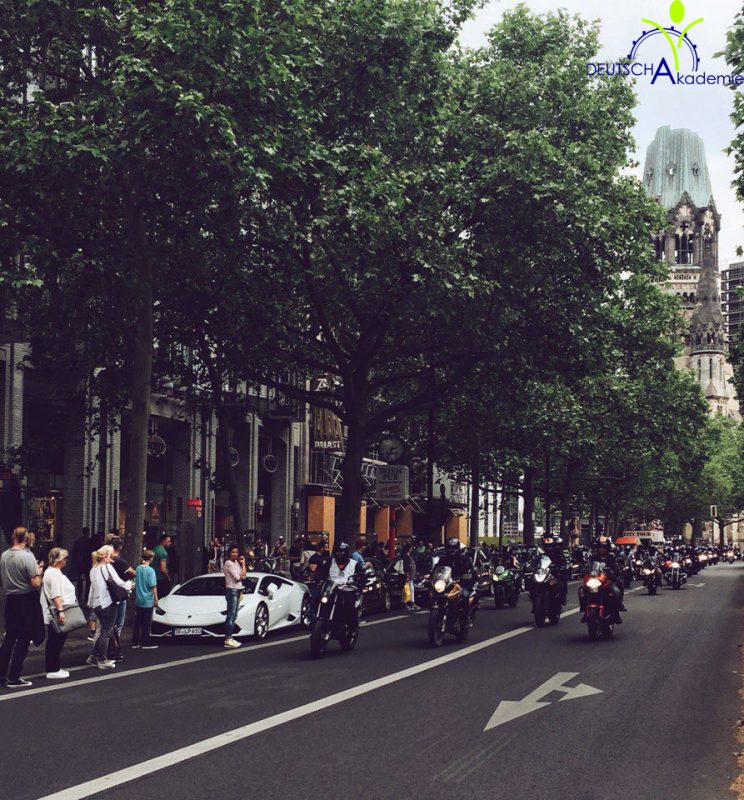Few days ago I witnessed an event on Kurfurstendamm where the crowd of bikers with their bikes participated. From one point of view, it was really great because all of them produced specific driving noise thus created cool atmosphere. On the other hand, it was completely impossible to cross the street as the flow of bikers was endless! This led me to the thoughts about European concerns about pollutions and to the contradiction connected with bikers-event.

Biker-event on the 28th of May
So, I have decided to investigate this issue in the context of the German ‘green’ behavior and found out several interesting ‘green’ logistics tools which are used in Germany nowadays.
In the context of urban passenger transport ‚green‘ tools are: city cycling, mobility stations, business mobility through ridesharing and, what was the most surprising for me, wirelessly-charged E-bus line! BVG runs electric buses since August 2015 and transports about two-thirds of a billion passengers per year by electric traction. The buses charge wirelessly and contactless exclusively with green electricity; they are not only absolutely emission-free but also produce low vibration at the time! Within one year, the four buses run approximately 200.000 kilometers at total, saving 260 tons of CO2 emissions.
As for the cargo delivery, there also some ‘green’ logistics solutions for decreasing CO2 emissions, they are: smartPORT strategy for managing all available modes of transport, transport planning with microscopic emission modeling via software instruments, cargo bikes and unusual eHighway trucks. eHighway system combines the efficiency of railway with the flexibility of road transport without losing necessary flexibility in the way of using active pantograph: the truck may be connected (run by electricity) or disconnected (run by fuel) to the contact lines at all speeds – and this system looks like trolley-truck.
These ‘green’ approaches are really innovative and promising today; to my mind, in the nearest future they will become a part of everyday life in Germany and, hopefully, will contribute to the environmental sustainability!
